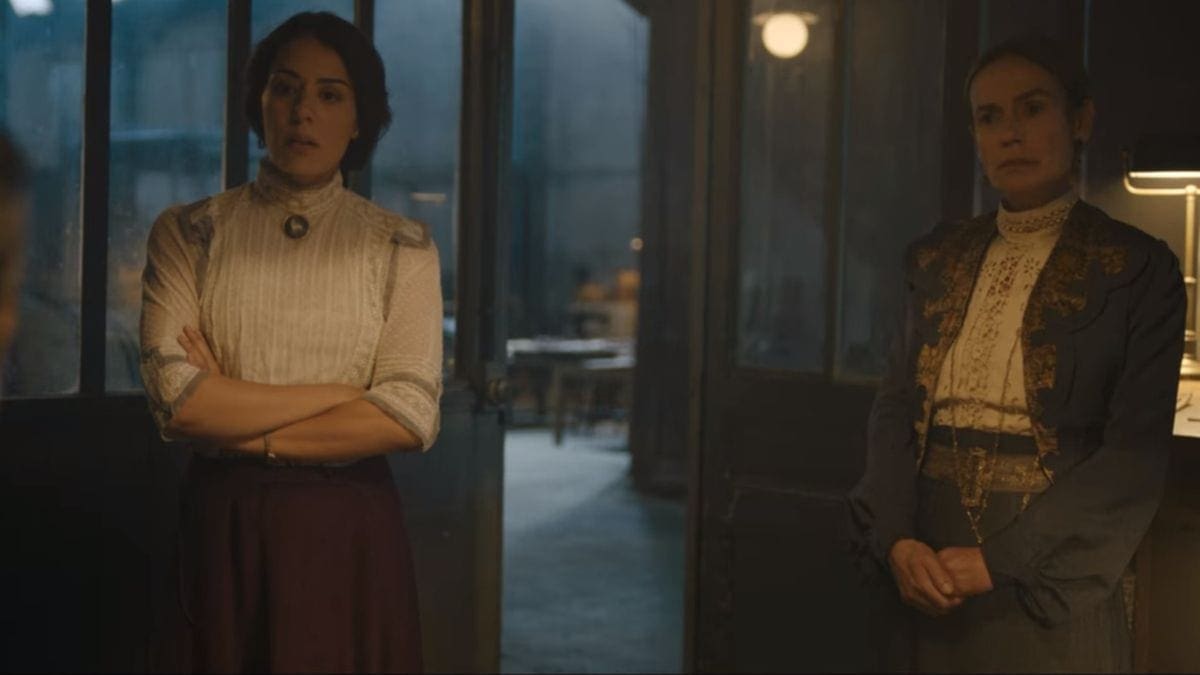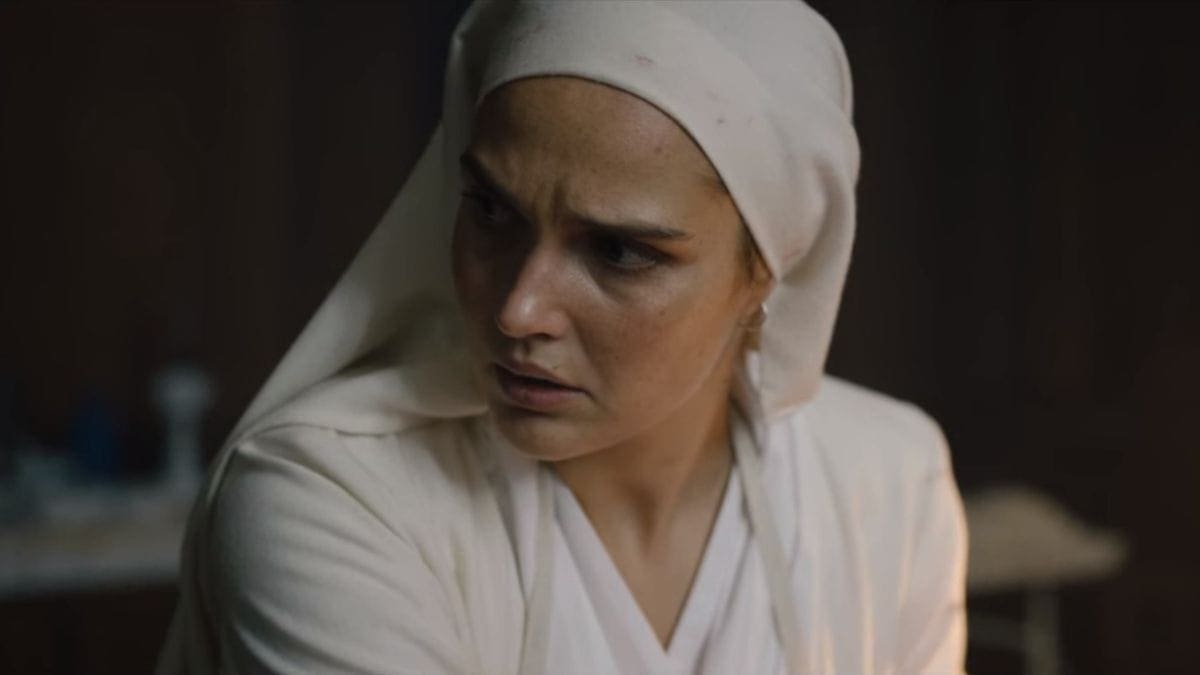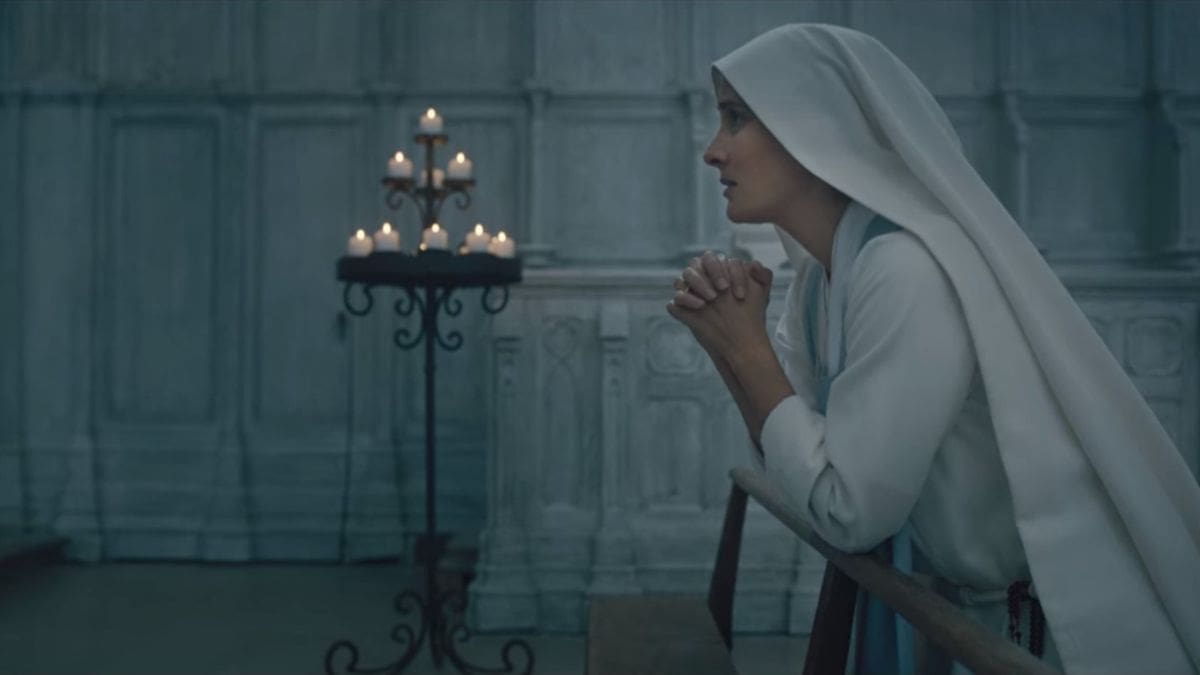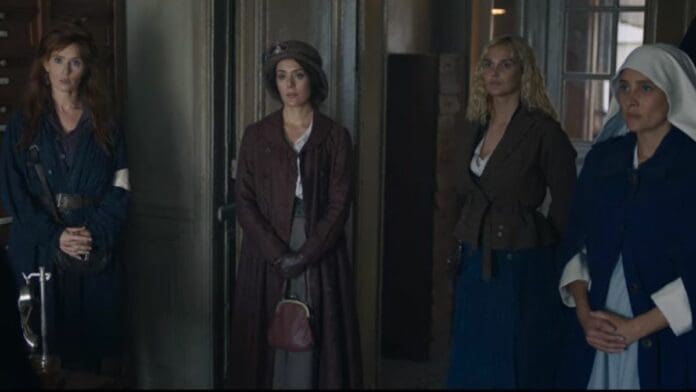A new French limited series has dropped, so here is the Women at War review to tell you all about it. This series, based on the first world war stars Julie de Bona, Audrey Fleurot, Camille Lou, Sofia Essaïdi, Sandrine Bonnaire, Tchéky Karyo, Laurent Gerra, Tom Leeb, Yannick Choirat, Grégoire Colin, Vincent Rottiers, Florence Loiret Caille, Maxence Danet-Fauvel, Eden Ducourant, Pascal Houdus, Michaël Vander-Meiren, Stacy Grewis Belotti, Emmanuelle Bouaziz and Bérénice Ouédraogo, among other cast members.
Women at War (Les Combattantes) consists of eight episodes that run for around 50 minutes. The series is created by Cécile Lorne and directed by Alexandre Laurent. Produced by Marc Brégain and Iris Bucher, the show originally aired on RTS Un in Switzerland, La Une in Belgium and TF1 in France before moving to Netflix.
Netflix’s synopsis of the show reads:
FRANCE 1914. AS THE GERMAN TROOPS ADVANCE AND MEN LEAVE FOR THE FRONTLINES, FOUR WOMEN MUST GRAPPLE WITH THE DEVASTATING CONSEQUENCES OF WAR AT HOME.
– Women at War Review Contains Spoilers –
Representing women in a period drama often means that there is an apologetic tone for the oppression because of the time it is based in. However, Women at War shies away from that narrative and sets out to give its characters agency even if they have to hustle for it. Wasting no time on exposition, this series gets right down to the meat of the plot.
It introduces the main characters Marguerite, Suzanne, Agnès and Caroline immediately. The narrative moves seamlessly from character to character while weaving their storylines together coherently. Based in a small town named Saint-Paulin, the series makes it clear that there is a large possibility for the protagonists to interact with each other. Additionally, the colour grading exemplifies the temporal ambience well, giving audiences high contrast and intricate detail in the picture.

From the beginning, it sets the tone for Marguerite, showing the way soldiers and handlers have been dehumanising her. Meanwhile, Suzanne is in a perpetual state of fear for herself and the patients that seem to be coming into the convent. Mother Agnès is completely on-board with using the convent as a military hospital. Finally, Caroline is dealing with her husband being inducted as an engineer for the war and ensuring her child is not feeling the negative effects of this separation.
All four of these characters, while not being a part of the combat aspect of the war, are extremely influential in the way it is being fought. Apart from the agency over their bodies, these characters also have strong personal values and ideals that don’t change for other people. Fortunately, none of these characters was fridged. Additionally, the show managed to show examples of the kind of men in are. They were represented accurately without any exaggeration or apology.
Also Read: That ’90s Show Review: The Fun is Back in the Forman House

The war is probably present for a tenth of the show, but the background that goes into fighting the war is placed at the forefront of the show. War is a breeding ground for fear, desperation and aggression, which the show explores extremely well, giving each character their time to shine. Drugs, mental anguish, post-traumatic stress and sexual tension are at an all-time high in this limited series. If there was something to explore about the war, this show does it.
While the cinematography is otherwise adequate, there are moments of disconnection where the jerky camera movements change to extremely steady-camera shots. It undercuts the impact of the image and tells an incomplete visual story. However, the rest of the show completely makes up for this oversight. There are moments in the convent when the lines and lighting make for a brilliant shot. In fact, the character Agnès has perhaps the best coverage in the convent. The pilot episode is one of the best examples of how well the series is shot.
Also Read: Alkhallat+ Review: Dark Comedy Rules The Four Trickery and Deception Stories

Women are often each other’s curse and salvation, and this show does such a wonderful job balancing that. It explores the way women behave because of their oppression and imparts that to other women in their life. Additionally, the exploitation by the Church, the double standard for women and the unrealistic expectation from women were some of the sub-plots that were extremely telling of the time and the way the world still functions.
The plot is convoluted and inter-woven densely enough, but as the episodes progress, the writers have managed to unravel each threat perfectly. While there are still loose threads, they are best left up to the audience’s interpretation. It is impressive that the story explores both the romance and war drama aspects equally. Viewers are given a chance to root for characters to get together but also get on the edge of their seats.
Women of War: Final Thoughts

If there is a long-form period drama this writer recommends, it would be this. There are elements of drama, action, thrill and romance. Additionally, it does a great job detailing the brutalities of war. The symbolism, subtle reproach of the hypocrisy in war and representation of the female experience make it an entertaining watch.
There is a visual language in this show that moves away from the male gaze and instead focuses on making both nudity and intimacy a functional element in the plot. The actors and writers do not shy away from writing progressive historical stories and even manage to include some queerness in the plot. It is a series that definitely deserves a watch.
Women at War is currently streaming on Netflix. What part of the show did you enjoy the most? Let us know in the comments below.
Also Read: Junji Ito Maniac: Japanese Tales of the Macabre Review: Disturbing Stories Make For a Great Watch


